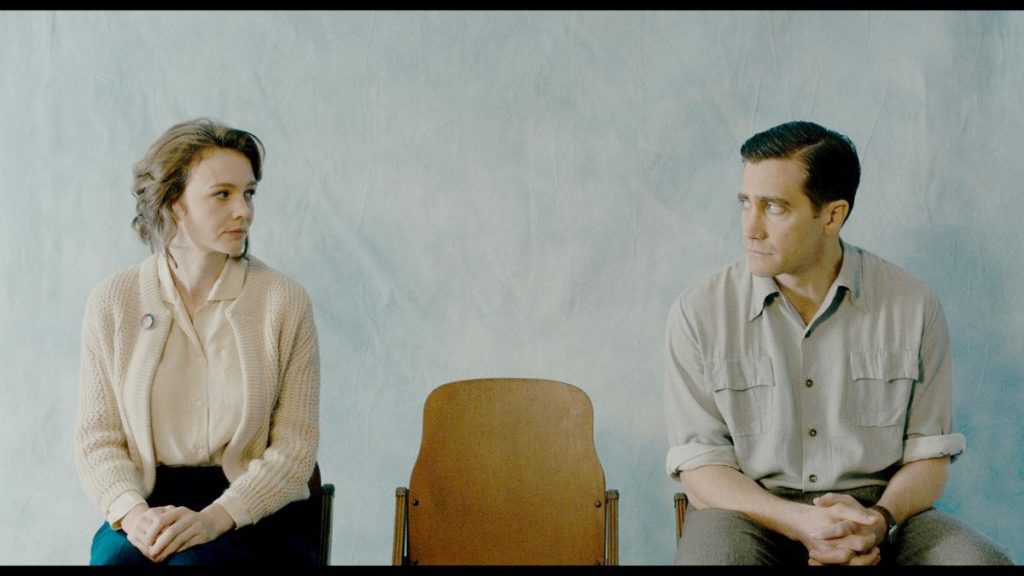“Wildlife” follows the brutal tale of a failing marriage and struggling family, but Paul Dano’s graceful direction and Carey Mulligan’s magnetic performance turn the harrowing story into something beautiful.
Based on Richard Ford’s 1990 novel by the same name, “Wildlife” takes place in 1960 Montana, and follows the story of the Brinsons — a family consisting of father Jerry (Jake Gyllenhaal), Jeanette (Carey Mulligan) and their 14-year-old son Joe (Ed Oxenbould). The family has just moved to Montana and is seemingly adjusting well. Jerry has a job at a local golf course while Jeanette stays home with Joe. At the beginning of the film, the lives of the Brinsons are simple, almost bland. The only out–of–the–ordinary aspect of their lives is the raging wildfires spreading just miles away from their home, a tragedy that is mentioned but rarely seen except for a bit of smoke in landscape shots.
Things go south for the family when Jerry loses his job at the golf course, causing the first signs of tension seen between him and Jeanette. To compensate, Jeanette takes up a job teaching swimming. The only career Jerry’s injured pride allows him to pursue is assisting in fighting the wildfires. It is a dangerous job that takes him away from home, leaving a furious Jeanette with a distraught Joe.
Jerry’s absence triggers a spiral with Jeanette’s character. She changes her image by taking up smoking, wearing clothes from her college years and beginning an affair with one of her wealthy swimming students, Warren Miller (Bill Camp). The transition Jeanette goes through is hard to pinpoint: She hasn’t quite lost her mind, but she’s lost sight of what has brought her life value thus far. Mulligan conveys this to the audience with staggering talent. This is noticeable in a confrontational scene between Jeanette and Jerry in which Jeanette is initially calm in her stance but quickly snaps at her husband in her own defense, a quick shift in mentality that Mulligan effortlessly executes.
This talent is especially highlighted in scenes with Oxenbould. There’s an almost uncomfortably realistic dynamic between the two actors. Both of their characters need guidance, and neither can provide it for the other — especially right after Jerry leaves the house. Jeanette is attempting to find her own purpose without her husband while Joe is simply trying to figure out life as a teenager without his dad. The film takes their relationship as mother and son to uncommon lengths — for instance, when Jeanette brings Joe over to Warren’s house for dinner, involving him in her affair. Throughout the dinner, Joe maintains his discomfort while Jeanette falls in and out of interest with Warren — initially rejecting his advances and leaving the dinner but then going back into the house and leaving Joe in the car. During this scene, Joe and Jeanette are both holding each other back from what they want while still being completely reliant on one another. They’re also both incredibly awkward in their interactions with Warren. It’s in these hard-to-watch scenes that Mulligan and Oxenbould succeed in conveying how lost their characters are — to the point where resolution feels almost hopeless.
Similar to the Midwestern life it conveys, the storyline of “Wildlife,” is fairly slow–moving, but Dano keeps it interesting with assistance from the scenery; the film is loaded with breathtaking shots of the Montana landscape. In addition, Dano manages to stay loyal to the time period without making it obvious — the fashion, setting and lifestyle are that of the 1960s, but there is no reliance on cliches, and the time period doesn’t carry strong significance. In several scenes, Dano keeps the camera still in a wide shot while action occurs between characters, almost as if someone sat a camera on a table and left it to pick up footage. This quality makes the scenes feel as if the audience is sitting with the characters and watching them in person, an effect that takes advantage of the beautiful landscape and the talented cast.
While it succeeds in realistically illustrating the ups and downs of the Brinson family, “Wildlife” can’t help but get tedious. Dano gives each character time to identify their flaws and eventually go through dramatic development, a process that gets repetitive and almost frustrating. The slow pace of the film causes it to drag at a few points, and a climax isn’t seen until near the very end when Jerry returns home.
Even still, “Wildlife” succeeds in depicting the fall of a seemingly perfect family but also leaves the audience with a reminder: Life can be the hardest it’s ever been but still be beautiful.




















